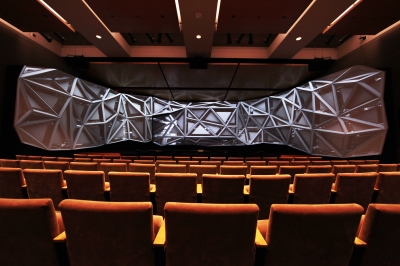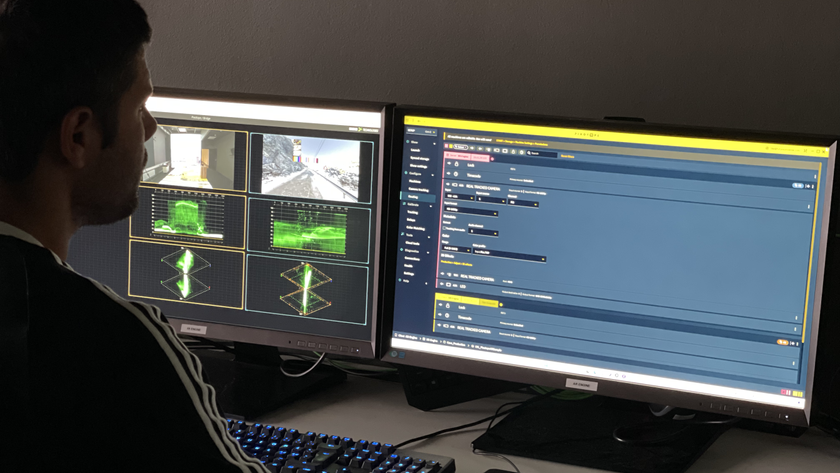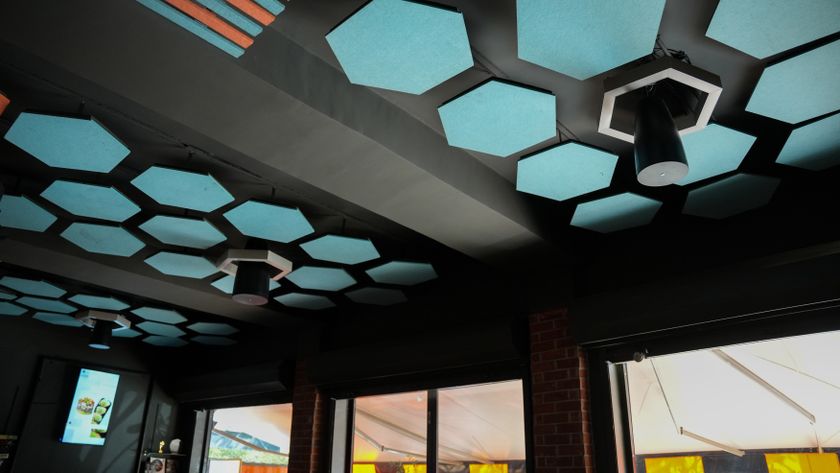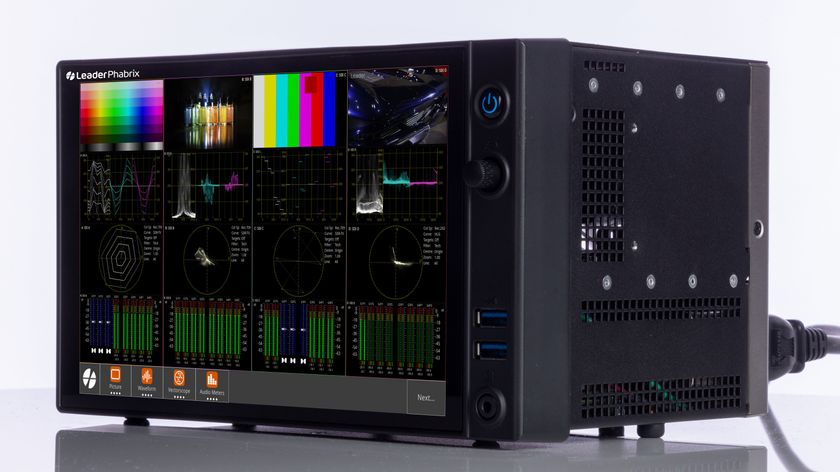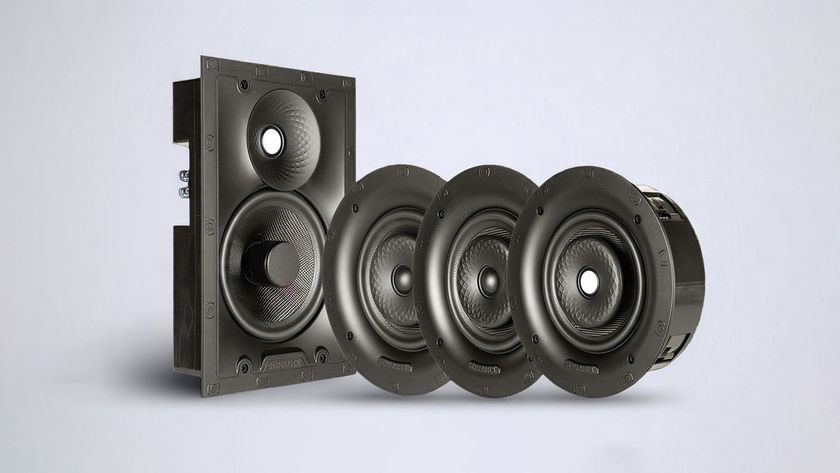- When Toronto-based digital marketing agency Klick Health held “Klick Ideas Exchange 2015” in Philadelphia, WorldStage was on hand to provide AV and lighting support as well as 3D projection mapping for artist John Ensor Parker’s multi-faceted set in the main venue.
The stage at Klick Ideas Exchange 2015.
“Klick Ideas Exchange” was a one-day forum at the National Museum of American Jewish History. The invitation-only gathering of approximately 200 life sciences executives, policy makers, and academics explored how emerging technologies and data can change the way healthcare is delivered and healthcare companies work.
WorldStage was tasked with providing audio, lighting and video solutions for the event. The Main sessions were held in the Dell Theater space, but technical support was extended to various other locations in the museum.
The theater was transformed for speaker presentations and panel discussions with a wrap-around stage set and hero screen, which served as display surfaces for a introductory video, speaker support and animated content. Brooklyn-based artist John Ensor Parker designed the set that was fabricated and installed by Your Solid Angle; he also designed and art directed the projection mapping content and audio with Glowing Bulbs.
“Klick Health didn’t want a typical corporate aesthetic for the program and speakers,” says Parker. “They wanted something out of the box, something that would take people to a different place mentally. So I designed an art piece – a projection sculpture that worked with client content.”
Parker’s multi-faceted geometric set wrapped around the stage; a flat rectangular hero screen was placed slightly off center to display PowerPoint and other speaker support. The set was constructed of wood and painted a projection-friendly gray.
“The Human Condition,” Parker’s two-minute high-intensity intro, starts with animations depicting the Big Bang of the multiverse and a journey to our own universe. At times the visuals reveal the origami-like structure of the set, then the set is flooded with color and black-and-white data ranging from cardiovascular graphics to quantum mechanics. “The whole set was covered, including the hero screen,” he explains. “Whenever the hero screen was not used for a single channel it disappeared visually.”
For the projection mapping WorldStage used Christie Digital WU14K-M Series projectors on the geometry and a dedicated Christie HD10K-M Series for the hero screen; two d3 Technologies 4x2pros, served up the content.
WorldStage provided Panasonic robotic pan tilt zoom cameras to capture a live feed for archival recording purposes. The cameras were also used to feed signal to various monitors located throughout the Concourse area and to feed the press room. WorldStage also supplemented house audio in the theater to deliver 5 discrete channels of sound.
The National Museum of American Jewish History was open to attendees during “Klick Ideas Exchange.” “On the first and third floors of the museum three exhibits use [Dataton] WATCHOUT systems to display video on curved structures and on an art piece,” says WorldStage account executive Lars Pedersen.
WorldStage lighting designer Terry Jackson furnished a full LED fixture package, including 100 wireless Astera LED PARs, eight Prism Profile Junior LED lekos, 16 Color Kinetics iWhite LED ColorBlasts, and two Selecon Variable White LED panels.
Jackson used the Selecon panels for President Clinton’s meet-and-greet. In the theater he deployed Source Four fixtures as key light and added punch and fill with iWhite ColorBlasts as footlights. “One challenge was balancing the lighting for the video recording, which is usually at a lower level, and not washing out the video content on the very shallow stage,” says Jackson. “With production electrician Bill Hopkins at the lead, we were able to achieve both looks.”
